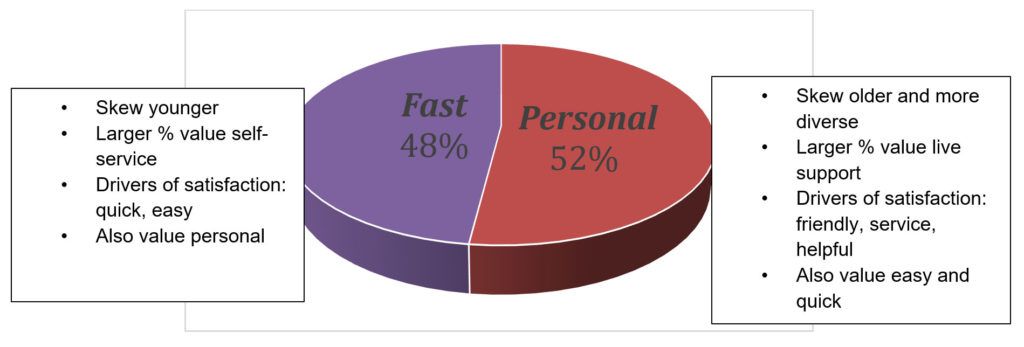
Five Medical Communication Preferences, According to Patients
A survey conducted by PPD, Thermo Fisher Scientific’s clinical research business, shows what patients prioritize in their medical communications. Learn more about key insights and strategies for putting them into action.

The medical communication experts at Thermo Fisher Scientific’s PPD clinical research business were not satisfied with basic patient satisfaction data to inform our clients’ medical communication strategies. So, we went straight to the source: In December 2021, we directly surveyed 400 European and United States patients on their preferences for medical communications.
Our findings are critical to any biotech or biopharma organization aiming to better understand patients’ medical communication preferences — and how best to deliver the information.
Read on to learn patient preferences across medical information solutions, as well as four strategies that will enable your company to fulfill patient needs.
Survey Goals
Patients from the United Kingdom, Germany and the United States participated in the survey:
- 400 patients
- 56% ages 18-55
- 44% ages 55+
Questions asked included:
- Which communication channels are preferred by patients, and are they expected to change moving forward?
- Do channel preferences change based on the specific need?
- Which attributes and features of the patient experience should pharmaceutical companies prioritize to strengthen customer relationships?
- Are patients open to follow-up interactions from pharmaceutical companies?
Key Insight 1: Talking to a live agent is not universally preferred.
Not everyone wants to talk to a live medical information representative. In fact, communication preferences vary depending on where the patient lives and the purpose of the outreach – whether it’s to learn more, ask a question, or share a positive or negative experience. The chart below shows how different needs affected the channel used.
| Live Agent | Web Messaging | Social Media | Text | Audio System | ||
|---|---|---|---|---|---|---|
| Learning/General information | 28% | 36% | 28% | 3% | 4% | 1% |
| Share positive experience | 45% | 29% | 12% | 8% | 3% | 3% |
| Information about clinical trials | 47% | 27% | 14% | 3% | 6% | 3% |
| Other (shipping savings questions) | 52% | 20% | 16% | 5% | 4% | 3% |
| Share negative experience | 43% | 33% | 13% | 8% | 1% | 2% |
| Product return/Refunds | 44% | 31% | 20% | 1% | 2% | 2% |
How did location affect preferences? Patients living in the U.S. are more likely to make a call when seeking to learn more. That preference for a human conversation increases with every year as patients age. In the U.K., patients are more likely to want a personal callback as a follow-up to their initial interaction and ongoing positive communication.
Email is the preferred communication channel when looking across markets, with German patients and caregivers exhibiting a very strong preference for the convenience of digital communication. However, those that preferred emails, texts and web messaging also wanted the ability to have a tangible asset for reference. Whether it’s a link or an attachment in an email, digitally driven patients want to be empowered with information to refer back to and review on their own.
“I prefer to have a record of important communication so I can easily refer back to it as needed.”
Key Insight 2: Communication preference isn’t going to change.
The survey found that nearly 90% of respondents expect their communication preferences to remain similar going forward, and that the COVID-19 pandemic would not impact their future communication channel preference, though some acknowledged that it has impacted their expectations. For example, patients now assume there will be longer wait times or less attentiveness due to staffing shortages.
Key Insight 3: Most patients appreciate follow-up communication.
Regardless of the purpose of an initial inquiry, a majority of patients — 66% —welcome and are willing to opt-in for follow-up communication, especially when that information helps build trust and assurance. Patients appreciate the closure when they receive a communication summary that provides clear guidance, or a check-in email to ensure the information provided upon their inquiry resolved their issue.
“I thought that was very nice of them [to send a follow up]. They didn’t have to do that. They went out of their way to be nice and pleasant, and I liked that.”
Key Insight 4: Patients value both speed and personalization.
This insight is important for channel optimization. Patients want quick, easy and friendly communication, regardless if it occurs via phone, web messaging, text messaging or email.
Depending on the patient’s needs — e.g., learning information about a clinical trial versus sharing a positive experience — they may use different channels and want different levels of accessibility. Companies that pay attention to patient needs and deliver the right content on the right channel will drive the highest satisfaction levels.

Of course, some individuals lean toward one driver over the other, and there are some cultural nuances across the market, such as patients in Germany greatly preferring efficiency. Overall, patients expect that communication should be both timely and personal.
“Having a personalized tailored email makes all the difference.”
Key Insight 5: Patients share more positive than negative experiences.
Patients contact pharmaceutical and medical device companies for two main reasons:
- To gather more information
- To share a positive experience
Forty-five percent of respondents report being willing to share a good experience through email. Those messages provide valuable insights into what your company is doing right, so make sure you capture and use that data. It can also be beneficial to identify opportunities for direct customer feedback, such as when you are updating service and technology offerings.
“I was very satisfied with how well the product worked and the results.”
Patient Preferences for Medical Communications: How to Put Insights Into Action
To drive improved customer engagement and experiences, PPD experts recommend four core strategies.
1. Deliver customization to market needs.
Cultural differences influence various aspects of medical communications, such as a preference for personalized calls vs. self-service digital solutions. Train your agents accordingly so their responses meet patients’ needs and wants.
2. Be equipped to manage engagement no matter the level of satisfaction.
Negative patient experiences can be made more positive if agents have access to detailed scenario scripts, which can make customers feel like they are getting personalized attention. For example, with product returns and refunds, make sure you minimize transfers, and proactively schedule follow-up calls to ensure resolution and increase positive sentiment.
3. Email, web messaging and phone — meet multi-dimensional expectations with speed and personalization.
With email and chat, ensure personalization isn’t sacrificed for speed. Patients will not feel a personal connection from a generic email, even if it’s sent with a fast response time. The more a drug developer can connect with the customer – by including their input, or with a personalized app or follow-up call – the more the organization creates positive customer engagement. For phone calls, make sure that efficiency is part of your process. Be purposeful in your routing and transfers, and avoid having patients repeat verification info. The goal is to be prompt while building rapport.
4. Identify areas for appropriate call-backs and ongoing engagement.
Whether it’s providing agent scenario training for outbound calls or providing pre-populated information from the initial inbound call, each communication should be viewed as a way to build and foster customer engagement and leave a positive, lasting impression. Consider a feedback process to assess whether the organization is meeting patients’ medical communication needs, and embrace opportunities for follow-up questions or customer satisfaction surveys that reference a previous interaction.